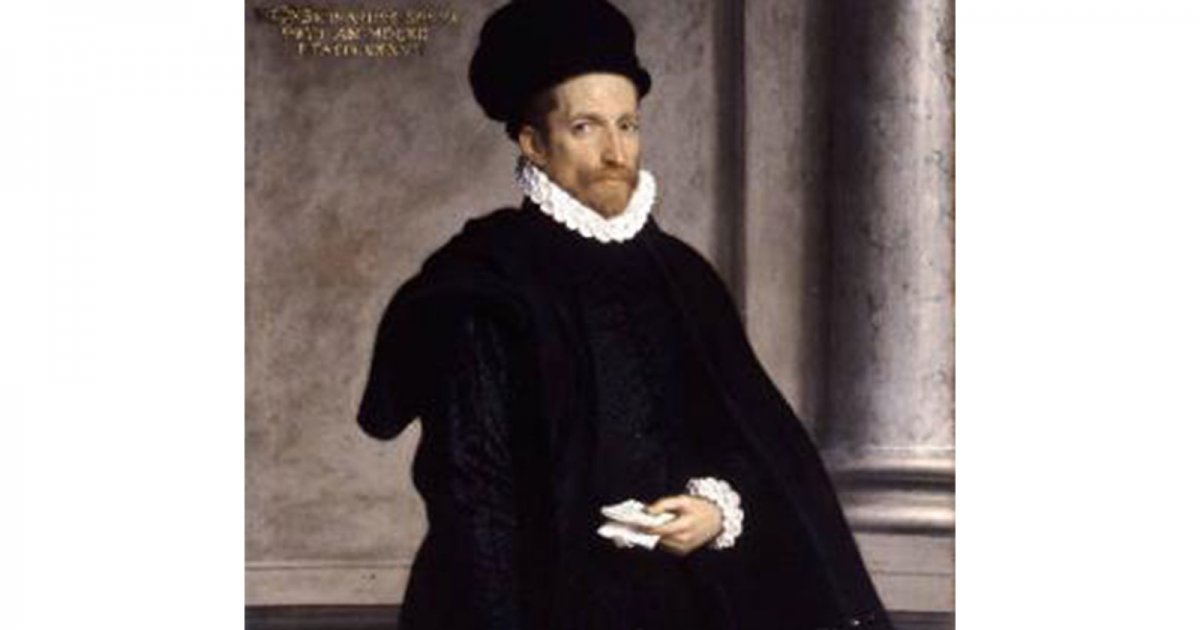ACCADEMIA CARRARA, Hall 11
 Language: English / USA
Language: English / USA
This room is dedicated to the austere, melancholy portraits painted between 1570 and 1575 by Giovan Battista Moroni. Originally from near Bergamo, Moroni is known for his sublime portraits of the minor aristocracy of the provinces and the wealthy middle classes who lived far away from the big cities and the latest fashions in the world of art, making their money from trade or from property income. The figures in his paintings are immobile, soberly dressed, and often appear against a plain, empty background.
Let’s start with the two portraits of man and wife, Bernardo Spini and Pace Rivola, which stand out because the two are portrayed full length. Bernardo was a merchant and politician, and is shown dressed in the austere Spanish-style suit in fashion at the time, featuring a stark contrast between the black of the fabric and the white of the cuffs, the card in his hand and the gloves.
Mirroring the painting of her husband is the portrait of Spini’s wife Pace, simply depicted in modest clothing, without jewelry, wearing a red dress buttoned up to her chin and a black cloak. The two paintings are the same size and have the same background, because they were once displayed side by side in the couple’s home.
Now take a look at “Ritratto di vecchio seduto” (Portrait of an old man seated).
Psychologically, this is an extraordinarily intense painting, and one of the most memorable in the room. The subject is wearing a comfortable cloak lined with fur, and appears to have just closed the book he was reading. Art academics all interpret the questioning look on the old man’s face as a sort of reproach for having disturbed his reading…Would you agree?
Equally profound is the expression we can observe in the painting entitled “Ritratto di gentiluomo ventinovenne” (Portrait of a 29-year-old man), in which the subject’s face almost seems suspended above the immaculate white collar.
Let’s now move on to “Ritratto di bambina di casa Redetti” (Portrait of a child of the House of Redetti); although small, you can’t help but notice the painting, because it is particularly bright.
As you can see, the little girl is dressed after the Spanish fashion of the time, just like the adults. The ocher shade of her dress contrasts with the white of the underskirt, the bright appearance of which suggests the fabric might have been satin. The pleated fabric collar frames the child’s face, with an expression somewhere between shy and proud to be posing for a portrait.
An interesting fact: in the 16th century, when Lombardy was under the dominion of Spain, the aristocratic classes had to conform to the austere Spanish fashion of the time, dominated by black, imposed by the devout King Philip II of Spain.



